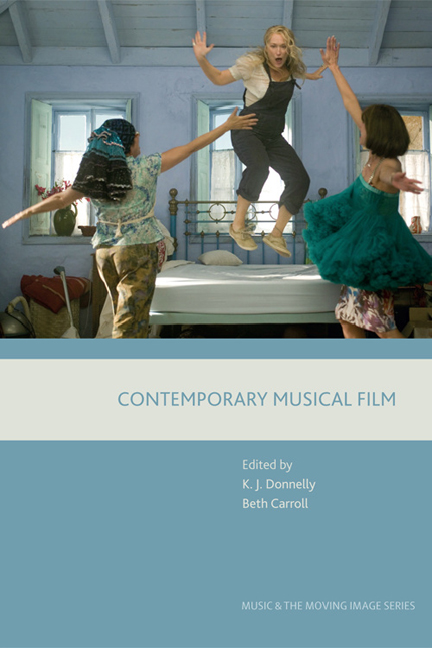Book contents
- Frontmatter
- Contents
- Illustrations
- Contributors
- Introduction: Reimagining the Contemporary Musical in the Twenty-first Century
- PART ONE ORIGINAL MUSICALS
- PART TWO STAGE TO SCREEN
- PART THREE MUSICALS BY ANOTHER NAME
- 9 O Brother, Where Art Thou?: The Coen Brothers and the Musical Genre Contamination
- 10 Racing in the Beat: Music in the Fast & Furious Franchise
- 11 Kill Bill: Quentin Tarantino as a Musical Filmmaker
- Index
11 - Kill Bill: Quentin Tarantino as a Musical Filmmaker
from PART THREE - MUSICALS BY ANOTHER NAME
Published online by Cambridge University Press: 03 January 2018
- Frontmatter
- Contents
- Illustrations
- Contributors
- Introduction: Reimagining the Contemporary Musical in the Twenty-first Century
- PART ONE ORIGINAL MUSICALS
- PART TWO STAGE TO SCREEN
- PART THREE MUSICALS BY ANOTHER NAME
- 9 O Brother, Where Art Thou?: The Coen Brothers and the Musical Genre Contamination
- 10 Racing in the Beat: Music in the Fast & Furious Franchise
- 11 Kill Bill: Quentin Tarantino as a Musical Filmmaker
- Index
Summary
Ever since the release of The Broadway Melody (Harry Beaumont, 1929), Hollywood has been producing musical feature films that have accumulated a specific repertoire of elements. With time, this coded canon of elements has filtered into other popular genres of mainstream cinema and has strongly influenced a wide variety of contemporary filmmakers. Characteristics that are associated with the musical genre consist of simple narratives with audiovisually spectacular moments, excessive set pieces that help to drive the narrative, and the explorations of themes such as glamorisation of exotic cultures and experimentation with traditional gender performances. Powerful emotions such as love and hate function as catalysts during instants of passion and conflict, and extraordinary bodies assert authority over luxurious sets by inhabiting it in remarkable ways. Musicals are spectacles, designed to captivate the attention of the audience with remarkable costumes, memorable movements and aesthetically pleasing scenery. But musical cinema is no longer the only genre to encompass and exhibit these qualities. Many of these conventions can be observed in what one might consider to be a completely unrelated genre: the Eastern martial arts genre. In 2003, Quentin Tarantino released a film that would highlight the porosity of assumed boundaries. Kill Bill: Volume 1 (Quentin Tarantino, 2003) would intersect Eastern with Western Culture, animation with live action footage, and masculine with feminine gender performance within its protagonist. But most importantly, it would bridge the gap between the musical and the martial arts genres.
We could consider Kill Bill: Volume 1 as a musical by any other name. Although on first glance it may be easy to label this film as (Western) action cinema, it incorporates all of the traditional features that are explored by the musical genre, and are often implemented in martial arts films. These include strong emphasis on its soundtrack and the action that is synchronised to it, and movement (violence, in this case) as choreographed spectacle. These striking moments are prominent in that they demand a narrative pause; commanding the spectator to focus on the protagonists’ bodies and the physical excess of their performance, whilst also creating a space for women to dictate control over the soundtrack. Kill Bill: Volume 1 is, therefore, the focus of this chapter, particularly in terms of how the film bridges the gap between the musical and the Eastern martial arts genres by encompassing and intersecting conventions of both.
- Type
- Chapter
- Information
- Contemporary Musical Film , pp. 174 - 190Publisher: Edinburgh University PressPrint publication year: 2017



